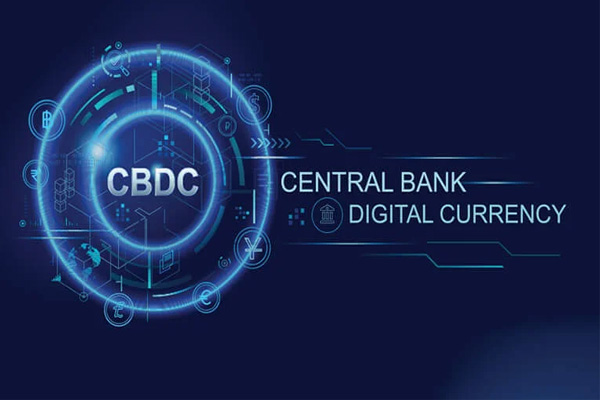Cryptocurrency has changed how we think about money. It has also brought new challenges for traditional banks. Digital currencies like Bitcoin and Ethereum are not just alternatives; they represent a whole new system.
Banks are feeling the pressure to adapt, and many people wonder how this shift will affect the future of finance.
In this blog post, we’ll dive into the key ways cryptocurrency is impacting traditional banking. You’ll discover how blockchain security, faster transactions, and the rise of digital currencies are challenging the old ways of doing business.
Cryptocurrency’s Impact on Banks | Top 15 Game-Changing Facts (Short Details)
- The Shift from Centralized to Decentralized Finance: DeFi platforms allow users to bypass banks and conduct transactions directly.
- Disintermediation: Cutting Out the Middlemen: Cryptocurrency eliminates the need for banks to act as intermediaries in financial transactions.
- Cryptocurrencies and Cross-Border Transactions: Crypto allows fast, low-cost cross-border transfers, reducing banks’ market share.
- Blockchain’s Impact on Transaction Security: Blockchain enhances financial transaction security by providing tamper-proof transparency.
- The Threat to Bank Fees and Profitability: Cryptocurrency reduces the fees banks rely on for profits by offering cheaper alternatives.
- Cryptocurrency ATMs: Expanding Access to Digital Banking: Crypto ATMs offer easy access to digital currencies, challenging banks’ dominance.
- Crypto Lending Platforms vs. Traditional Loans: Crypto lending provides easier, faster loans without the need for a credit check.
- Financial Inclusion: How Cryptocurrency Helps the Unbanked: Crypto offers financial services to the unbanked population, bypassing traditional banks.
- Stablecoins: A Bridge Between Crypto and Traditional Currencies: Stablecoins provide a less volatile alternative to cryptocurrencies, appealing to both crypto and fiat users.
- Regulatory Challenges for Banks and Cryptocurrencies: Cryptocurrencies operate in a less regulated environment, creating legal uncertainty for banks.
- Central Bank Digital Currencies (CBDCs) as a Response: CBDCs represent central banks’ attempt to compete with decentralized cryptocurrencies.
- Cryptocurrency Volatility and Risk for Banks: The high volatility of cryptocurrencies poses significant risks for banks.
- The Role of Traditional Banks in Cryptocurrency Custody: Banks now offer secure storage for digital assets alongside traditional wealth management.
- Partnerships Between Traditional Banks and Crypto Companies: Banks and crypto firms are teaming up for integrated financial services.
- The Future of Traditional Banking in a Crypto-Driven World: Traditional banks may adapt or coexist with cryptocurrency platforms in the future.
1. The Shift from Centralized to Decentralized Finance

Traditional banks are centralized systems. This means they control all aspects of money transfer, loans, and security. Cryptocurrency, on the other hand, is decentralized. No single institution manages it. This is called decentralized finance (DeFi). With DeFi, users can make transactions directly without needing a bank.
DeFi platforms are growing fast. They offer lower fees, quicker services, and full control to the user. Traditional banks often rely on complicated processes that take time and cost more. This makes DeFi attractive to customers who want more control over their money. As this continues to grow, traditional banks are losing ground in areas like lending and cross-border transactions.
2. Disintermediation: Cutting Out the Middlemen

Banks have always been the middlemen in financial transactions. They process payments, verify identities, and ensure security. This system is slow and expensive. Cryptocurrency cuts out the need for these middlemen. Transactions happen directly between two parties. This lowers costs and speeds up the process.
Blockchain technology makes this possible. It ensures that transactions are safe and transparent without needing a central authority. For banks, this is a significant threat. With fewer people using their services for payments, banks could lose a major source of income.
Read more: How Cryptocurrencies May Impact the Banking Industry
3. Cryptocurrencies and Cross-Border Transactions
Sending money across borders using traditional banking systems can be expensive and slow. Banks often charge high fees for international transfers. Transactions can also take days to complete. Cryptocurrency changes this. With digital currencies like Bitcoin, people can send money to any part of the world quickly and for much lower fees.
Blockchain technology makes cross-border transactions faster and more efficient. This is a significant advantage over traditional banking systems. People can send money almost instantly without the usual high costs associated with international transfers. It’s a game-changer for businesses and individuals alike.
Read More: Top 15 Facts About the Most Controversial Genetic Editing Experiments
4. Blockchain’s Impact on Transaction Security

Banks have long been trusted to secure financial transactions. However, traditional banking systems are vulnerable to fraud and hacking. Cryptocurrency uses blockchain technology to enhance security. Blockchain ensures that transactions are transparent, permanent, and impossible to alter once completed.
This level of security is something traditional banks cannot easily match. With each transaction recorded on the blockchain, it is far more difficult for bad actors to tamper with financial records. For customers, this means more peace of mind when transferring money or making purchases.
5. The Threat to Bank Fees and Profitability

Banks generate significant revenue from fees. From overdrafts to wire transfers, these fees add up. However, with the rise of cryptocurrency, customers can avoid many of these costs. Blockchain transactions are typically cheaper, and users can transfer money without relying on traditional banks.
For banks, this is a worrying trend. If more people choose cryptocurrency, their profits could take a serious hit. They will need to rethink their fee structures or find new ways to make money. Otherwise, customers will continue to flock to cryptocurrency platforms that offer cheaper services.
6. Cryptocurrency ATMs: Expanding Access to Digital Banking

Cryptocurrency ATMs are popping up everywhere. These machines allow users to buy or sell digital currencies with ease. They offer a way for people to engage with cryptocurrency without needing a bank account. For traditional banks, this trend represents a growing threat to their services.
More and more people are using cryptocurrency ATMs to manage their digital assets. This cuts out the need for traditional banking services. Banks have long held the monopoly on cash withdrawals and deposits. But as cryptocurrency ATMs spread, customers have new ways to access their funds without using a bank.
Read More: Top 15 Facts About the Ethical Implications of Deepfake Technology
7. Crypto Lending Platforms vs. Traditional Loans
Traditional banks are known for their complex loan processes. To get a loan, customers often need to provide detailed credit histories and go through lengthy approval processes. Cryptocurrency lending platforms are changing that. These platforms allow users to borrow or lend digital currencies without a credit check.
Crypto lending is simpler and faster than the traditional banking process. Users can access loans with fewer barriers. For people with limited credit histories, this is a major advantage. However, for banks, it represents a threat to one of their key services.
8. Financial Inclusion: How Cryptocurrency Helps the Unbanked
Millions of people around the world lack access to basic banking services. Traditional banks often exclude those in rural or underserved areas. Cryptocurrency offers a solution. With just a smartphone and an internet connection, anyone can access digital financial services, no matter where they are.
Cryptocurrency allows people to store, send, and receive money without needing a bank. This opens up financial opportunities for the unbanked population. People who were once excluded from the financial system now have a way to manage their money and participate in the global economy.
Read more: Crypto regulations and building financial inclusion
9. Stablecoins: A Bridge Between Crypto and Traditional Currencies
Stablecoins are digital currencies that are tied to traditional assets like the US dollar or the euro. This makes them less volatile than other cryptocurrencies. They offer a way to bridge the gap between crypto and traditional banking systems. People can use stablecoins for transactions without worrying about huge price swings.
For traditional banks, stablecoins are both a competitor and a potential partner. Some banks are beginning to explore how stablecoins can be integrated into their systems. This could help banks adapt to the growing demand for digital currencies without fully abandoning traditional banking methods.
10. Regulatory Challenges for Banks and Cryptocurrencies
Cryptocurrency operates in a grey area when it comes to regulation. Traditional banks are heavily regulated to protect consumers and ensure stability. Cryptocurrencies, on the other hand, often operate without these strict controls. This creates challenges for banks, governments, and consumers alike.
Banks must steer these regulatory uncertainties if they want to integrate cryptocurrency into their services. At the same time, governments are trying to figure out how to regulate digital currencies without stifling innovation. The future of banking will depend in part on how these regulatory issues are resolved.
Read More: Top 15 Fun Facts About the Human Brain You Didn’t Know
11. Central Bank Digital Currencies (CBDCs) as a Response

Some central banks are developing their own digital currencies. These Central Bank Digital Currencies (CBDCs) aim to offer the benefits of cryptocurrency with the security of a central authority. Unlike decentralized cryptocurrencies, CBDCs would be issued and controlled by central banks.
For traditional banks, CBDCs represent both competition and opportunity. If CBDCs become widespread, they could reduce the need for private banks to manage transactions. On the other hand, banks could partner with central banks to offer CBDC-based services.
12. Cryptocurrency Volatility and Risk for Banks
Cryptocurrencies are known for their price swings. Bitcoin, for example, has experienced both massive gains and dramatic drops. For traditional banks, this volatility presents a major risk. While some banks are exploring ways to incorporate cryptocurrency, they remain cautious because of its unstable nature.
Banks are used to dealing with stable assets like cash and government bonds. Adding cryptocurrency to the mix could expose them to unpredictable risks. However, as more people invest in digital currencies, banks may feel pressured to offer crypto services despite the risks.
Read more: Decrypting financial stability risks in crypto-asset markets
13. The Role of Traditional Banks in Cryptocurrency Custody
Traditionally, banks have always acted as custodians of wealth, safeguarding customers’ money and valuables. They provide secure storage for assets such as cash, gold, and even important documents. In this role, banks not only store these assets but also manage them by offering services like savings accounts, investments, and loans.
Now, some banks are expanding their services to include cryptocurrency custody. They are offering secure storage solutions for digital assets like Bitcoin and Ethereum. These services often come with features like cold storage (offline storage) and private key management to protect customers’ crypto holdings from hacks and theft.
14. Partnerships Between Traditional Banks and Crypto Companies
Traditional banks are increasingly forming partnerships with cryptocurrency companies. These collaborations allow banks to integrate blockchain technology into their services. For example, some banks have teamed up with crypto exchanges to enable customers to buy, sell, and store digital currencies directly through their bank accounts.
These partnerships are beneficial for both parties. Banks gain access to the fast-growing crypto market, and crypto companies benefit from the trust and customer base that banks have built over the years. This collaboration helps bridge the gap between traditional finance and the new world of digital currencies, making it easier for people to adopt and use cryptocurrency.
15. The Future of Traditional Banking in a Crypto-Driven World

The rise of cryptocurrency has raised questions about the future of traditional banking. Some experts predict that banks will continue to adapt, integrating more crypto services into their offerings to remain competitive. Others believe that cryptocurrency could eventually replace certain aspects of the banking system altogether.
For now, it seems likely that both can coexist. Banks will likely focus on offering services that complement the growing demand for digital assets, such as secure storage, compliance, and regulatory frameworks. Meanwhile, crypto platforms will continue to attract customers with their speed, lower fees, and decentralization.
Conclusion:
Cryptocurrency is no longer just a passing trend. It’s reshaping the world of finance, and traditional banks are feeling the pressure.
While cryptocurrency brings new opportunities, it also introduces risks. Banks that find ways to integrate crypto into their services may thrive in this new landscape. Those that don’t may find themselves left behind. One thing is certain; the future of banking will never be the same again.
15 FAQs (Frequently Asked Questions):
-
What is decentralized finance (DeFi)?
Decentralized finance (DeFi) allows users to conduct transactions without intermediaries like banks, using blockchain technology.
-
How does cryptocurrency impact traditional banks?
Cryptocurrency reduces banks’ roles in transactions by offering cheaper, faster alternatives for payments, lending, and transfers.
-
What are the advantages of using cryptocurrency for cross-border transactions?
Crypto enables near-instant, low-cost international transactions, making it more efficient than traditional banking methods.
-
How does blockchain enhance transaction security?
Blockchain ensures that each transaction is transparent, irreversible, and highly secure, preventing fraud and tampering.
-
Can cryptocurrency replace traditional bank loans?
Yes, crypto lending platforms provide loans without requiring credit checks, offering faster and easier alternatives to bank loans.
-
How do stablecoins differ from other cryptocurrencies?
Stablecoins are tied to real-world assets, such as the US dollar, to provide more stability compared to traditional cryptocurrencies.
-
What are cryptocurrency ATMs, and how do they work?
Cryptocurrency ATMs allow users to buy or sell digital currencies using cash, without the need for a traditional bank account.
-
Are cryptocurrencies regulated like banks?
Cryptocurrencies operate in a less regulated environment, though governments are increasingly working to create crypto-specific regulations.
-
What is the role of central banks in cryptocurrency adoption?
Central banks are exploring Central Bank Digital Currencies (CBDCs) to compete with decentralized cryptocurrencies.
-
Why are cryptocurrencies so volatile?
Cryptocurrencies are highly speculative, leading to large price swings due to market sentiment and low liquidity.
-
Can blockchain be used to fight money laundering?
Yes, blockchain’s transparency makes it easier to track transactions, helping to detect and prevent money laundering.
-
Will banks start offering crypto services?
Many banks are beginning to offer cryptocurrency custody services to retain customers in the face of growing crypto adoption.
-
How does cryptocurrency help the unbanked?
Cryptocurrency provides access to financial services without the need for a bank account, benefiting the unbanked population globally.
-
What risks do cryptocurrencies pose to banks?
Cryptocurrencies threaten banks’ profits by reducing fees, disintermediating services, and introducing new forms of competition.
-
What is a Central Bank Digital Currency (CBDC)?
CBDCs are digital currencies issued by central banks to provide a government-backed alternative to decentralized cryptocurrencies.




